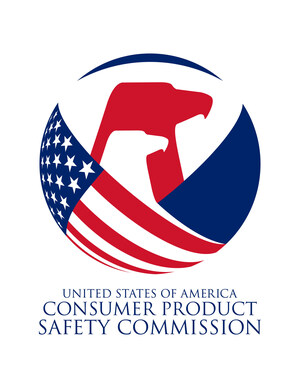WASHINGTON, Oct. 31, 2012 /PRNewswire-USNewswire/ -- As consumers across the country prepare for haunted Halloween fun, CPSC offers tips for selecting and creating safe costumes and home decorations.
(Logo: http://photos.prnewswire.com/prnh/20030904/USCSCLOGO)
"The trick to a safe Halloween celebration is to choose wisely from the start," said CPSC Chairman Inez Tenenbaum. "Make selections with safety in mind. Choose well-fitting costumes flame-resistant materials and the appropriate tools for decorating. The treat is keeping your family safe this holiday."
Last year, more than 3,500 Halloween-related injuries were reported between October and November. Incidents involved burns, lacerations from pumpkin-carving, falls related to ill-fitting costumes, and injuries from collisions due to impaired vision.
Pumpkin carving was associated with the most Halloween-related injuries in 2011. Consumers should create a stable base and use the appropriate tools to prevent cuts and lacerations.
When selecting a costume, make sure it fits well, does not drag the ground, and is not too large or billowy. To prevent burns, the federal Flammable Fabrics Act (FFA) requires costumes sold at retail to be flame resistant. Consumers can create similar protection with homemade costumes by choosing synthetic fabrics that are inherently flame resistant, such as nylon and polyester.
Consumers are encouraged to prevent the potential of fires and burns caused by Halloween decor. Opt for flameless, battery-operated lights or glow sticks in jack-o'-lanterns and other places where children can gain access. Burning candles should be kept away from combustible decor and places where they can be brushed against or knocked over.
CPSC recommends these additional safety tips to help make this year's holiday safe:
Decorations
- Outside your home, use flameless candles or keep burning candles and jack-o'-lanterns away from landings and doorsteps, where trick-or-treaters' costumes could brush against the flame.
- Remove obstacles from lawns, steps, and porches when expecting trick-or-treaters.
- When indoors, keep candles and jack-o'-lanterns away from curtains, other decorations, and other items that could ignite. Do not leave burning candles unattended.
- Whether indoors or outside, use only decorative light strands that have been tested for safety by a recognized testing laboratory. Check each set of lights, new or old, for broken or cracked sockets, frayed or bare wires, or loose connections. Discard damaged sets.
- Don't overload extension cords.
Costumes
- When purchasing costumes, masks, beards, and wigs, look for flame-resistant fabrics, such as nylon or polyester; or look for the label "Flame Resistant." Flame-resistant fabrics will resist burning and should extinguish quickly. To reduce the risk of contact with candles and other fire sources, avoid costumes made with flimsy materials and outfits with big, baggy sleeves, large capes, or billowing skirts.
- Purchase or make costumes that are brightly colored and clearly visible to motorists.
- For greater visibility during dusk and darkness, decorate or trim costumes and treat bags with reflective tape that will glow in the beam of a car's headlights. Bags or sacks also should be brightly colored or decorated with reflective tape. Reflective tape is usually available in hardware, bicycle, and sporting goods stores.
- Children should carry flashlights to be able to see and be seen.
- To guard against trips and falls, costumes should fit well and not drag on the ground.
- Children should wear well-fitting, sturdy shoes. High heels are not a good idea.
- Tie hats and scarves securely to prevent them from slipping over children's eyes and obstructing their vision.
- If your child wears a mask, make sure it fits securely, provides adequate ventilation, and has holes large enough to allow full vision.
- Swords, knives, and similar costume accessories should be made of soft, flexible material.
Treats
- Children should not eat any treats before an adult has examined them carefully for evidence of tampering.
- Carefully examine any toys or novelty items received by trick-or-treaters who are younger than 3 years of age. Do not allow young children to have any items that are small enough to present a choking hazard or that have small parts or components that could separate during use and present a choking hazard.
Contact:
U.S. Consumer Product Safety Commission
301-504-7908
SOURCE U.S. Consumer Product Safety Commission
WANT YOUR COMPANY'S NEWS FEATURED ON PRNEWSWIRE.COM?
Newsrooms &
Influencers
Digital Media
Outlets
Journalists
Opted In





Share this article